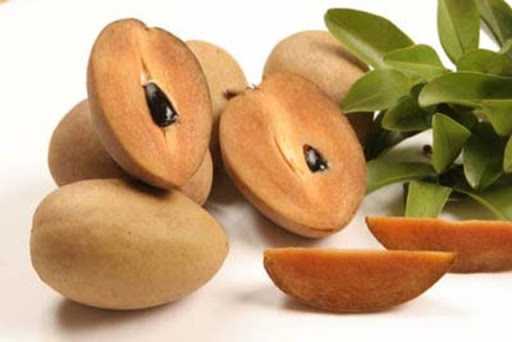Fresh fruits make a tropical holiday’s picture complete. Whether you see the mangoes on the tree or the fresh fruit cocktail on the side table of your pool bed, the link is there: you are in the tropics. Aruba grows its own fruits and vegetables and there are some local species you may never heard of, but they are really healthy and delicious.
Mispel
This is a fruit with a character (5-10 cm/2-4 inches). It does not ripe until it is picked or falls off the tree. Mispel is hard with a sandpaper like texture when immature, soft and juicy when ripe. It’s technically a berry, but contains a skin similar to that of a kiwi. It’s grainy and sweet, with a light, musky flavor. The sap or gum from the tree is also a source of ‘chicle’ the original ingredient used to make chewing gum. Rich in tannins, antioxidants shown to contain anti-inflammatory compounds, and vitamin C, essential for healthy immune function. Season: year- round.
Druif
There is no chance you did not bump into one of the sea grape trees while spending your vacation on Aruba. The sea grape plant is often used in ocean-side landscaping in sandy soil right on the beach and it produces clusters of fruit that resemble grapes. Are sea grapes edible? Yes, they are. Animals enjoy sea grapes and humans can eat them as well, and they are used to make jam. They contain very low calories and sugar, enabling good bacterium to digest food and excrete waste quickly which is effective in preventing constipation. Season: Sep-Oct.
Shimaruku
Maybe Aruba’s most popular wild fruit tree. You may have noticed cars at the side of the road and people picking those red berries. Well, that’s Shimaruku. The local habit to stop for these delicious fruits goes from generation to generation. Its fruit’s degree of sour depends on the amount of rain it gets. Red Shimarukus tend to taste better than orange. The fruit has super power: a true vitamin bomb. Adults only need to eat 3-4 of these berries to meet their daily recommended amount of Vitamin C. Season: Rainy months (Oct-Jan).

















